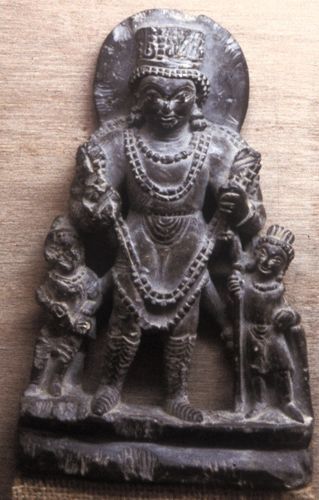Guest lecture by Marion Frenger
Sūrya and his dress – means of identity creation and adaptation?
The Saxon Academy of Sciences in Leipzig cordially invites you to attend an exciting guest lecture by Marion Frenger on 27 May 2024, 3 pm, in Straße des 17. Juni 2, room 126, on the topic "Sūrya and his dress – means of identity creation and adaptation?".
Please note that the lecture will be held in German.
Abstract
The development of the worship of an anthropomorphic sun god in northern India has been repeatedly discussed over the decades; an essential question shaping this discussion was summarised by Adalbert Gail in the title of his 1978 article, "Der Sonnenkult im alten Indien – Eigengewächs oder Import?" (The sun cult in ancient India – homegrown or imported?) (ZDMG 128, 333–348).
A key argument in favour of the thesis that the sun cult was imported to India and did not primarily grow out of the older indigenous sun worship was the clothing of the god and his companions Daṇḍin and Piṅgala, who were added to the sun image in ca. the 4th century. With the long, close-fitting robe, the conical headdress and the boots, the attire resembles the clothing of various Central Asian equestrian peoples, as it was prominently depicted in both Gandhara and Mathura during the Kuṣāṇa period. Interestingly, essential elements of this clothing not only remained part of the iconography of Sūrya and his attendants far beyond the end of the Kuṣāṇa presence in northern India, but were only really depicted in detail in the later sculptures.
The lecture presents the development of the clothing of the sun god and his attendants up to the 8th–9th century in the north Indian Gangetic plain, looks at the simultaneous development in the northwest of the subcontinent and the various interpretations of the clothing by scholars in the 19th and 20th centuries. For the sake of completeness, it also includes a excursus on Revanta, the last-born son of the sun god. He has been depicted as an independent god in cult images since roughly the 5th–6th century and his appearance is repeatedly described as similar to that of the sun god in literary sources.
